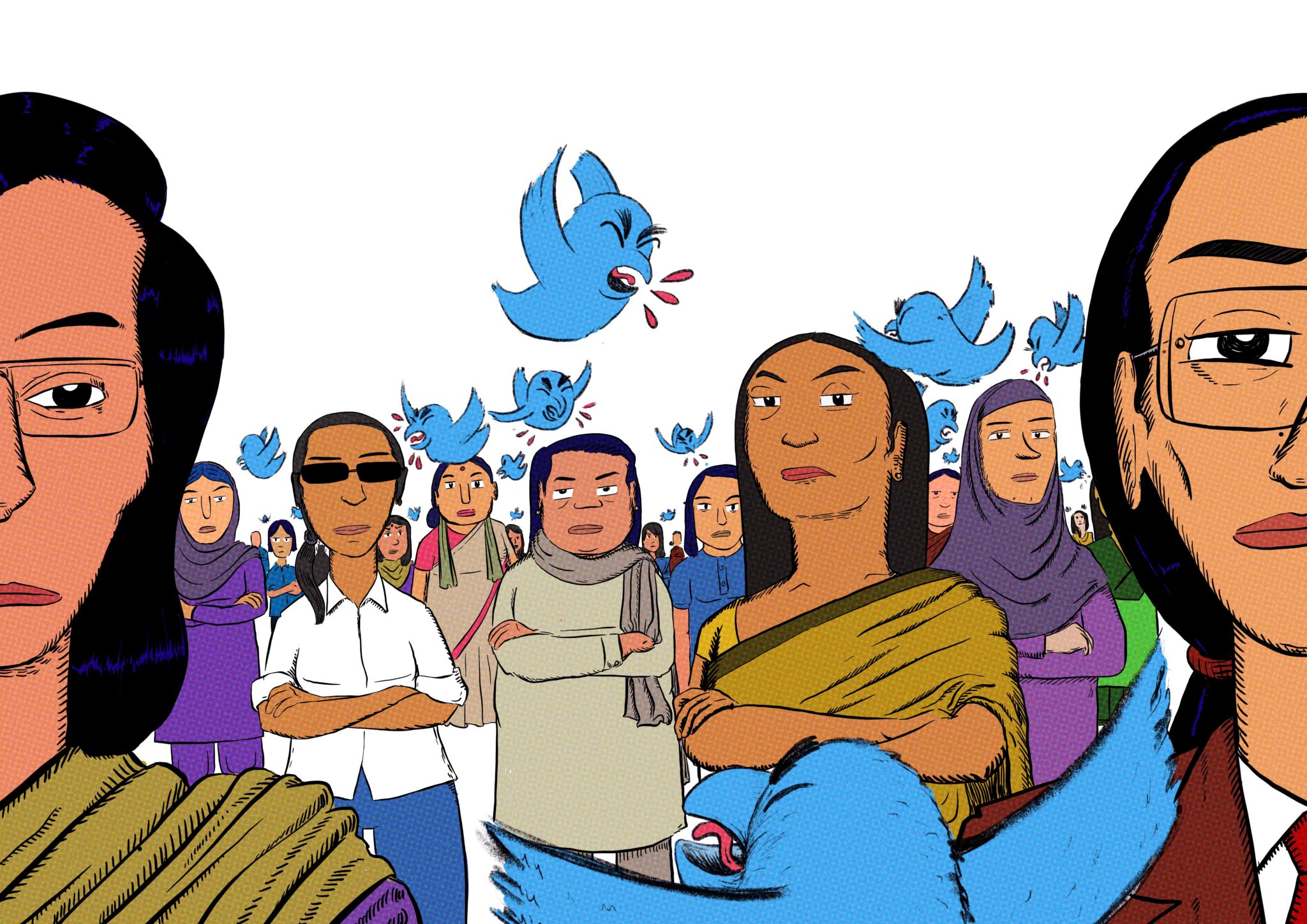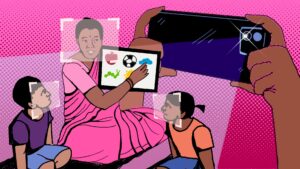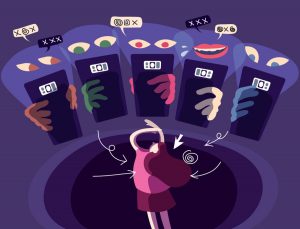How Digital Spaces Are Pushing Marginalised Women Campaigners Further Into Shadows

The rights of women from India’s marginalised communities are being disproportionately constrained and eroded in digital civic spaces, says a report by The Bachchao Project, a techno-feminist research and advocacy collective. These spaces are shrinking for such women because they are excluded from and underrepresented in mainstream feminist civic movements, the report has argued.
The project documents the online experiences of 12 marginalised women organisers, including their interactions with the State, endless harassment and hate from non-State actors and apathetic response from platforms. The findings point to a continuous cycle of online abuse, self-imposed censorship and constant fear of State persecution as they try to build online communities and networks.
This online harassment is compounded by the already marginalised social position of the women, concluded the report. Vocal women from persecuted communities who speak on politics or religion face repeated sexualised attacks. The cyber harassment of Muslim women activists, students, and journalists on online auction apps such as Sulli Deals and Bulli Bai over the past two years were aimed at silencing women through hypersexualisation and objectification, BehanBox had earlier reported.
The findings of the report are reiterated by yet another study, ‘A Platform Weaponised: How YouTube Spreads Harmful Content – And What Can Be Done About It’, by the New York University-Stern Center for Business and Human Rights, an academic research and advocacy organisation. It concludes:“Menacing online attacks on women often blend with anti-Muslim themes in India.”
Upto 95 women politicians in India received over 10,000 problematic or abusive tweets everyday between March and May 2019, showed an Amnesty International study. Muslim women politicians received 94% more ethnic or religious slurs than women politicians from other religions, it found.
‘Is this tweet going to get me jailed?’
Both reports pointed out that the Indian government exceeded its legislative mandate by issuing advisories to social media platforms to curb content that “may affect public order”. In 2019, the Indian government sent 3,600 orders to take down social media content or accounts and 6,000 such orders within the first six months of 2021. It also sent the most number of legal information requests for Twitter accounts.
State action against what the Bachchao Report calls “dissenting social media profiles” is not uncommon (see here, here and here). Bengaluru-based climate activist Disha Ravi was arrested last year for sharing a social media toolkit consisting of tweets in support of the farmers’ movement against the now-repealed farm laws.
A week ago, the home of student activist Afreen Fatima was razed to the ground by Uttar Pradesh authorities on the grounds that it had been illegally constructed. Her father and the leader of the Welfare Party of India, Mohammad Javed, was taken into custody by UP Police on June 10 for his alleged role in organising the protest that turned violent in Prayagraj over the controversial remarks made last month by BJP party functionaries against Prophet Muhammad. Javed’s wife and another daughter were also detained but later released.
The police have also targetedly monitored specific social media profiles during the anti-Citizenship Amendment Act protests in Delhi during December 2019. In Kashmir, social media users have been summoned to police stations and subjected to violence for their tweets and posts.
“The very existence of a state surveillance system, which regularly monitors and directs the removal of online content and criminalises individuals, functions as a disciplining panopticon that substitutes direct state violence with the state’s soft power of monitoring and control. This makes people hyper-vigilant and leads to ‘self-censorship,’ that is, individuals would like to freely express themselves but refrain from doing so to avoid punitive action from the state,” the report stated.
Most respondents, including those who had not been subjected to State censorship or prosecution themselves, reported exercising varying degrees of self-censorship while using social media. They seemed to be perpetually assessing the extent to which they could exercise their right to freedom of expression given their lack of trust in the state for the protection of their fundamental freedoms. “You’re always thinking… is this tweet going to get me jailed,” a respondent told the Bachchao report researchers.
Cyber harassment
Online sexual harassment is among the most common forms of attack on politically active women in India, stated the report. Almost two-thirds of the research participants reported having faced cyber sexual harassment from non-state actors. Two of them have filed cases that are ongoing.
The report pointed to the multiple methods used to perpetrate online abuse, including attacks on identity with casteist, Islamophobic, homophobic, transphobic slurs; trolling and bullying; coordinated attacks; attempts to hack social media profiles; doxing attacks and threats; contacting or tagging the institutions of employment to get the women fired and tagging social media accounts of the police on the dissenting profiles.
“Whether in academia or activism or among law enforcers…online sexual harassment is very under-emphasized. I feel that it is as important, as unjust and criminal as being physically harassed or assaulted. If somebody comes and eve-teases me, I can at least shout back at them, get rid of my emotions, at least not have to see that person again…All this is underemphasised and understudied––from fellow women, from fellow feminists, and from the larger civil society. This needs to be dealt with more seriously,” said a respondent.
The impact of online gender-based violence is different from harassment in physical spaces, as the former is for everyone to witness and may reappear, long after the act of harassment, said a respondent.
“In my name, porn images were also sent. I still see them. I still continue to be harassed every time I see them,” she said.
“They feel that the biggest weapon to silence or crush the woman’s spirit is to tear apart her personal life in the public sphere, to…give it a public gaze, and look at it from a very misogynist, masochist and in my case, Hindutva gaze. They feel that they will assassinate my character publicly and that will shut me up,” shared another respondent.
Toll on personal life
“My personal life has already been torn apart, debated and commented upon,” said a respondent. As a result, women have to constantly evaluate the risks their online presence poses for not just themselves but also their friends and family.
One participant shared that sexually abusive comments had been posted about her child and everytime she blocked the account, a new one would replace it.
Women belonging to gender and sexual minorities run the risk of their identities being revealed. “Random people who I’m not out to as trans will discover me and put two and two together and question me online. And that’s….happened with me with my uncles, cousins and others. And…that is the biggest worry for me right now,” Nadika Nadja, a research participant said.
Respondents shared their apprehensions about their online presence jeopardising future employment and educational prospects. “I am worried, more than state action…about the fall out after state actions, in terms of, what will happen to me after. Even if there is state action––even if I am targeted––how will that play out? Will that impact things like my livelihood, my ability to take up studies, and do other stuff?” said Nadja of her fears.
Constant cyber harassment has resulted in extreme mental and emotional distress to their mental health, shared the respondents. Almost all of them reported experiencing “..trauma, triggers, hurt, depression, anxiety, shock, feeling very low, helpless and feeling insulted. The participants also spoke about feeling alone and unheard during and after the incident.”
Many users have been driven off of social media platforms by the cycle of toxicity. “I think it impacted (me) in a lot of ways…I didn’t use my phone for almost 7-8 months. Because it just gets out of hand,” said a respondent who was trolled and abused for participating in an online protest event.
Inadequate redressal mechanisms
Almost all participants reported being dissatisfied with the reporting mechanisms of online platforms where they complained about content that was “a targeted threat; sexual harassment; or Islamophobic, casteist, homophobic, transphobic or racist”. The algorithms, they alleged, are designed only to understand specific words or phrases and “not the context or the tone”.
“It’s not abuse for them [platforms] until someone uses some phrases, some words — but just saying that ‘trans women are not women’ is not (considered) hate. How do I report that tweet?” asked Nadja.
Many respondents also shared that the very mechanisms that were meant to flag off abusive content was being “weaponised for censoring dissent and marginalised groups”.
Since law enforcement agencies, including the police, have failed to protect members of the marginalised communities from excesses committed by the majoritarian communities, women from marginalised groups do not easily consider filing FIRs, the report said.
Police personnel cannot be seen in isolation from the rest of society, claimed a respondent. “The law is there, but the enforcement is not there. When we look at police(men), and you know, kind of put them on a higher pedestal…But these policemen are also part of the society which is Islamophobic right now,” she said.
We believe everyone deserves equal access to accurate news. Support from our readers enables us to keep our journalism open and free for everyone, all over the world.




